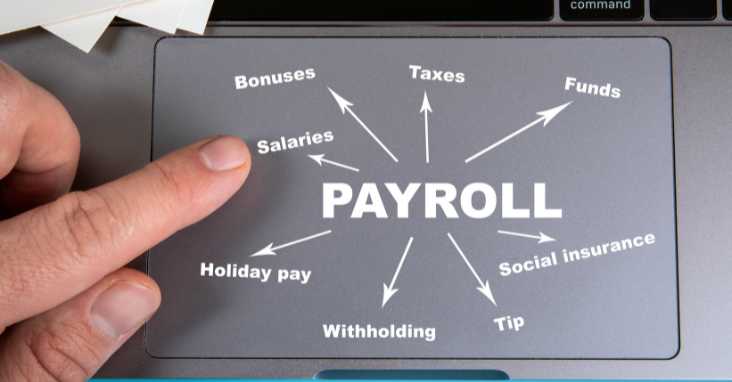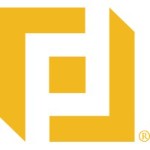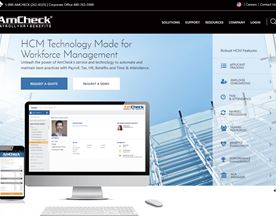If you’re reading this, you’re probably looking to get a grip on payroll administration. Whether you’re a seasoned pro or just starting, you know managing payroll can be as tricky as a Sudoku puzzle. But don’t worry, I’ve got your back!
In this post, I’m diving deep into the world of payroll administration. We’re talking about everything a payroll administrator, from the basics of payroll administrators to payroll administrator responsibilities to the nitty-gritty details of payroll administrator responsibilities that can make or break your efficient payroll administration process. Payroll isn’t just about your payroll administrators paying your employees; it’s about an efficient payroll administrator doing it efficiently, accurately, and in compliance with all those pesky laws and regulations.
Payroll administration: Learn how to streamline your payroll process, ensure compliance, and enhance efficiency with this expert guide.
So, grab a cup of coffee, and let’s unravel the mysteries of payroll and business administration together. I promise to keep it light, informative, and, most importantly, practical. Ready to become a payroll wizard? Let’s get started!

Understanding Payroll Administration
Payroll administration is like the heartbeat of your business. It involves everything from calculating wages, salary, and deductions for bonuses to making sure your employees get everything paid correctly, accurately, correctly, accurately, correctly, accurately, correctly and on time. But it’s not just about doing salaries and writing checks. It’s a complex process that intertwines finance, human resources, and compliance.
Why It Matters
Legal Compliance: Messing up with managing your office payroll can land you in hot water with the law. Staying compliant means understanding your own duties and responsibilities and adhering to tax laws, other employment laws, regulations and procedures, and reporting requirements.
Employee Satisfaction: Your employees work hard for their paycheck. Timely payment and accurate pay not only keeps them happy but also boosts their job morale and their job productivity.
Financial Health: Efficient and responsible payroll management helps you keep a tight rein on managing your company and business owner finances. It’s crucial for responsible budgeting, financial planning, and overall business health.
Challenges in Payroll Administration
Keeping Up with Regulations: Tax laws, paid overtime, and other employment laws and regulations are always changing. Staying up-to-date is a full-time job in itself.
Accuracy: Calculating taxes, benefits, and other deductions more accurately is vital. Mistakes can be costly and time-consuming to fix.
Time-Consuming Processes: Traditional payroll processes can be incredibly time-consuming, taking you away from work hours, vacation time and from other important tasks and responsibilities.

The Essentials of Payroll Administration
Let’s break down the essentials of payroll administration. Think of it as your toolbox for tackling this complex task.
Setting Up Your Payroll System
- Understanding Payroll Cycles: Weekly, bi-weekly, monthly? Choosing the right payroll cycle is crucial for smooth operations.
- Employee Classification: Understanding the difference between full-time, part-time, and contract workers is vital for proper tax and benefit calculations.
- Setting Up Payroll Software: A good payroll software can be a game-changer. It automates calculations, keeps track of changes in law, and saves you a ton of time.
Payroll Calculations
- Gross Pay: This is where you start – calculating how much your employees have earned before any deductions.
- Deductions: Taxes, benefits, wage garnishments – deductions can be complex, and getting them right is crucial.
- Net Pay: The grand finale – the amount your employees actually take home.
Record Keeping and Reporting
Keeping accurate records is not just good practice; it’s a legal requirement. From tax forms to your employee paychecks, and stubs, you need to ensure everything is in order and easily accessible.

Advanced Payroll Management Strategies
Once you’ve got the basics down, it’s time to level up your payroll game. Here are some strategies to make your payroll process even smoother.
Automating Payroll Processes
Why Automate?: Automation reduces errors, saves time and human resources, and keeps you compliant.
Choosing the Right Software: There are tons of options out there. I’ll guide you through choosing the one that fits your small business owner, like a glove.
Integrating Payroll with Other Business Systems
HR Systems: Integrating your payroll system with your HR systems can make companies streamline payroll experience and more employee satisfaction through data management.
Accounting Software: Syncing payroll and electronic timekeeping systems with your company and accounting system keeps your company and organization’ financials up-to-date and accurate.
Staying Compliant
Understanding Payroll Laws: Ignorance is not bliss when it comes to payroll laws. I’ll help you understand what you need to know.
Regular Audits: Conducting regular payroll audits is a must to have an efficient payroll administrator as payroll administrators must ensure payment accuracy and compliance.

The Role of Technology in Payroll Administration
Technology has revolutionized payroll and business administration too. Let’s explore how tech can make your payroll process a breeze.
Payroll Software Solutions
Features to Look For: Automation, compliance tools, user-friendly interfaces – I’ll break down what makes great payroll software.
Cloud-Based vs. On-Premise: Each has its pros and cons. We’ll weigh them to help you make the best choice for your business.
The Future of Payroll Technology
AI and Machine Learning: These technologies are changing the game in payroll processing.
Mobile Accessibility: The ability to manage payroll on the go is a game-changer for busy entrepreneurs.

FAQs About Payroll Administration
Q1: How often should I run payroll?
Running payroll and employee paychecks by pay period depends on your business needs and employee preferences. Common salary cycles are paid weekly, bi-weekly, or monthly. Consider factors like cash flow, overtime payments the nature of work, your payable hours, and legal requirements when deciding your pay period.
Q2: What are the common mistakes to avoid in payroll processing?
Common pitfalls include inaccurate tax withholdings and payroll deductions, misclassifying employees, late payments and payroll deductions, and neglecting state and local tax requirements. Stay vigilant and double-check calculations.
Q3: How can I ensure my payroll is compliant with tax laws?
Stay updated on federal, state, and local tax laws. Consider using payroll software that updates tax rates automatically and consult with a tax professional regularly.
Q4: Should I outsource my payroll or keep it in-house?
This depends on your organization, business size, complexity, and organizational skills and resources. Outsourcing can make companies save time and reduce errors, but in-house payroll offers more control. Assess your company, needs, organizational skills, resources and capabilities before deciding.
Q5: How does employee classification affect payroll?
Correctly classifying employees as either full-time, part-time, or independent contractors is crucial for tax purposes, wages and salary and bonuses, for wages and benefits eligibility and job well. Misclassification can lead to legal and financial penalties.
Q6: What are the benefits of using payroll software?
Payroll software automates the payroll manager and payroll administrators ensure others’ salaries and calculations, the payroll manager’ responsibilities, the payroll administrator’ duties and tasks, ensures compliance, saves time, reduces errors, and often offers valuable insights into labor costs and trends.
Q7: How do I handle payroll for remote or international employees?
For remote employees, have payroll specialists comply with tax laws in their location. International payroll tax status can be complex due to varying laws and tax treaties. Consider specialized payroll specialists and efficient payroll administration services for international staff.
Q8: Can I integrate payroll software with other business systems?
Yes, many payroll systems integrate payroll administrators with HR, accounting, and time-tracking software. This integration streamlines processes and ensures data accuracy across platforms.
Q9: How can I improve the efficiency of my payroll process?
Automate payments wherever possible, maintain organized employee records, and hire two payroll administrators ensure regularly update your knowledge on payroll laws and procedures, and seek employee feedback for continuous improvement.
Q10: What should I do if I make a mistake in payroll processing?
Correct the mistake promptly, notify affected companies and employees, and report any tax status or amendments to tax authorities if necessary. Implement measures to prevent future errors.

Software Tools for Payroll Administration
- Gusto – Great for small businesses, offers full-service payroll with a user-friendly interface.
- ADP – Ideal for larger businesses, provides comprehensive payroll and HR solutions.
- QuickBooks Payroll – Best for businesses already using QuickBooks for accounting.
- Paychex – Offers scalable solutions for businesses of all sizes.

Conclusion
Whew! That was a lot to cover, but now you’re armed with the knowledge to tackle payroll administration like a pro. Remember, payroll is more than just a task; it’s a crucial part of managing your business that deserves your attention and care. By staying informed, regarding employee questions, leveraging technology, and keeping an eye on compliance, you can turn payroll from a headache into a smooth, efficient payment process that supports your business and your employees.
Key Takeaways
- Understand the Basics: Get the fundamentals right, from payroll cycles to employee classification.
- Leverage Technology: Use payroll software to automate and streamline your process.
- Stay Compliant: Keep up with laws and regulations to avoid penalties and ensure accuracy.
- Integrate and Innovate: Sync payroll with other business systems and stay open to new technologies.















